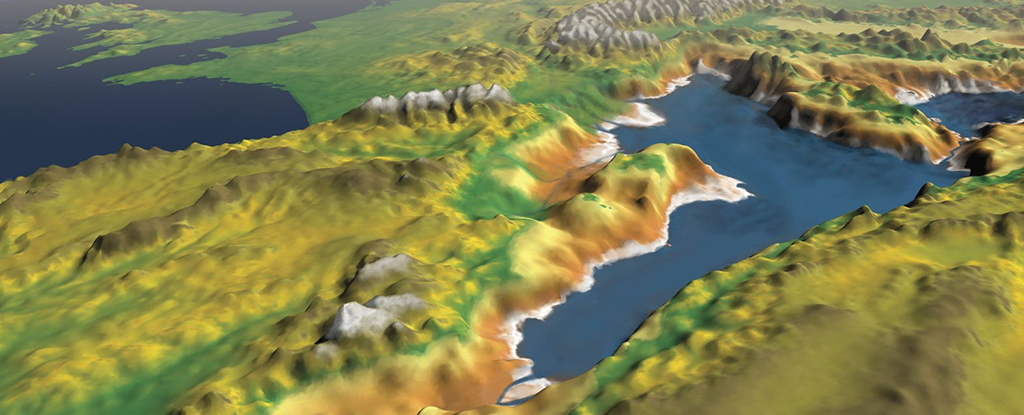Around 5.5 million years ago, almost three quarters of the Mediterranean Sea evaporated into the air – and new research helps to explain what caused this event, known as the Messinian Salinity Crisis (MSC).
The extreme evaporation event actually happened in two phases, according to the international team behind the new study.
By analyzing chlorine isotopes in the salt deposited on the seabed, and building numerical models and simulations, the researchers were able to chart when, where, and how 70 percent of the Mediterranean’s water was lost.
The first phase covered 35,000 years of restricted water flow between the Mediterranean and the Atlantic Ocean, via what is now the Strait of Gibraltar.
As the seawater wasn’t getting refreshed with freshwater, that restriction sped up the deposit of salts and water evaporation in the Mediterranean.
In the second phase, across the next 10,000 years, the Mediterranean Sea was completely isolated, and the whole process accelerated.
The researchers, led by Earth system scientist Giovanni Aloisi from the French National Centre for Scientific Research (CNRS), found that in some areas, water levels would have dropped by as much as 2.1 kilometers (1.3 miles).
As the water receded in phase 2, the underwater ridge across the Strait of Sicily would’ve become exposed, the team suggests – effectively splitting the Mediterranean Sea in two and forming a land bridge between Africa and Europe.
That in turn led to faster rates of evaporation in the eastern Mediterranean, where the biggest drops in sea level would have been – and most salt deposits were found across both of these phases.
Scientists have long debated how the MSC came about, and whether or not it happened when the Mediterranean was fully cut off from the Atlantic. This new study suggests both schools of thought are right – that it was a two-phase process.
The researchers don’t dive deeply into why the Mediterranean became isolated, but the late Miocene was a time of extensive, dramatic tectonic activity. The MSC itself would’ve caused even more tumult, as pressure lifted on the surface crust, and surrounding areas dried out.
“The huge size of the Mediterranean depression created by MSC water level drawdown – corresponding to a volume loss of 69 percent of the Mediterranean water body – would have generated planetary-scale climate effects, inducing changes in precipitation patterns, a scenario suggested by rainfall proxy data,” write the authors in their published paper.
Today, the Strait of Gibraltar is much wider and deeper than it was during phase 1 of the MSC. If it wasn’t for this connection to the Atlantic Ocean, it’s estimated that today the sea level of the Mediterranean would be dropping by about half a meter (nearly 20 inches) every year.
Eventually, the Zanclean flood event reversed the impact of the MSC, but this new study offers valuable insight into not just the Mediterranean Sea, but changes across the whole region during this formative time in history.
“Our results have broader implications for the biological, geologic and climatic evolution of the Mediterranean realm, and beyond,” write the researchers.
The research has been published in Nature Communications.





